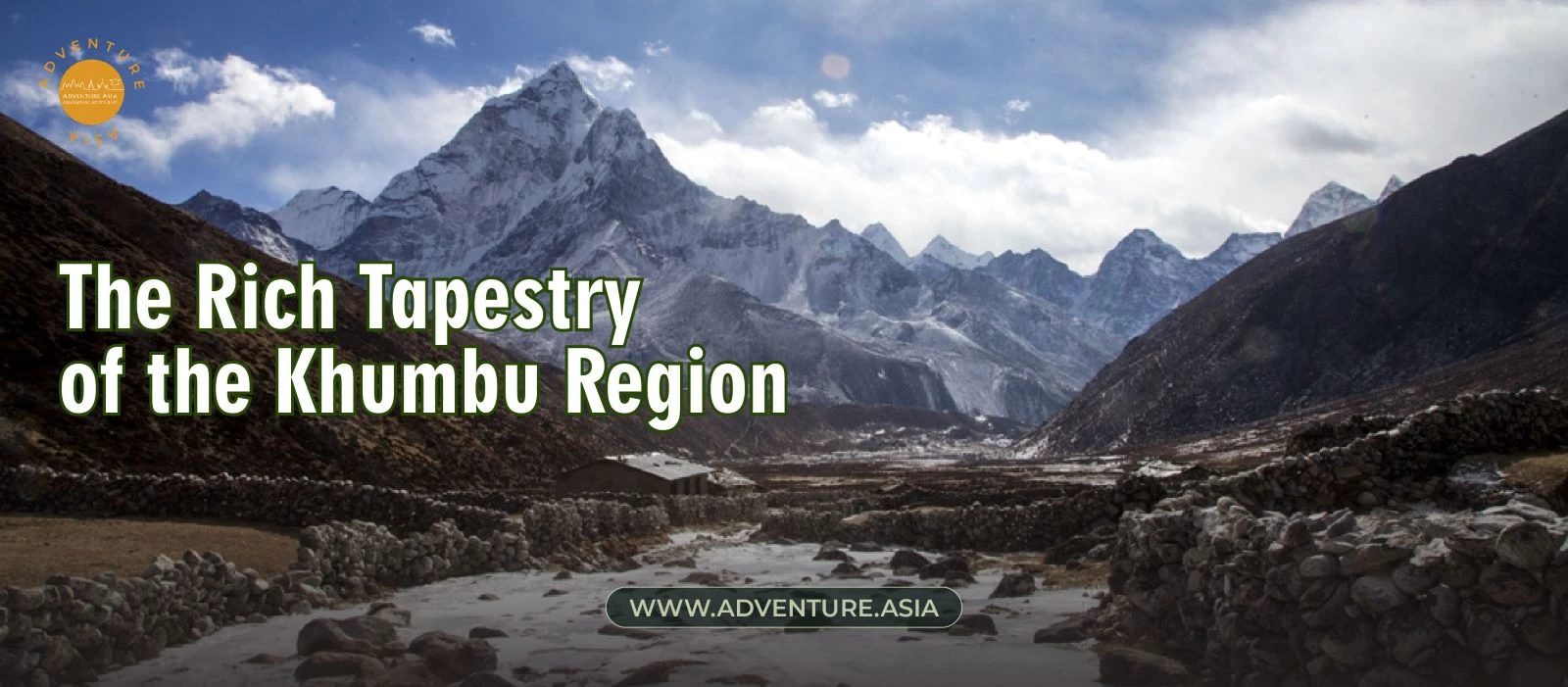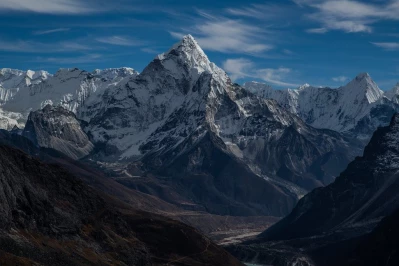
Unveiling the Rich Tapestry of the Khumbu Region: Beyond Everest Base Camp Nepal
- 1. The Sherpa People: Stewards of the Himalayas
- 2. Tengboche Monastery: A Beacon of Serenity
- 3. Breaking the Ice: Bridging the Gap with Locals
- 4. Responsible Tourism: Supporting the Sherpa Community
- 5. Respecting Local Customs and Traditions
- 6. A Visual Journey into Sherpa Culture
- 7. Everest Base Camp Nepal: A Gateway to Cultural Connection
The colossal peaks of the Everest region aren't just a magnet for thrill-seeking trekkers; they stand as silent sentinels guarding a vibrant and ancient culture.
While the breathtaking scenery undoubtedly steals the show on the Everest Base Camp Nepal, a deeper journey awaits beneath the towering mountains.
Nestled amidst the Khumbu region lies a tapestry woven with rich Sherpa traditions, where Buddhist spirituality permeates the very air. This trek isn't just about conquering a physical milestone; it's a chance to immerse yourself in a unique way of life and gain a profound appreciation for the people who call this extraordinary place home.
1. The Sherpa People: Stewards of the Himalayas
The Sherpas, renowned for their resilience and deep connection to the mountains, are the beating heart of the Khumbu region. Their history in the Himalayas stretches back for centuries, and their way of life has become intricately woven into the fabric of the landscape. As you traverse the trekking route, quaint Sherpa villages nestled amidst the mountains will greet you. Observe the women skillfully weaving colorful yak wool carpets, a traditional craft passed down through generations. Watch the men tend to their herds of yaks, powerful beasts that have long played a vital role in Sherpa culture, providing transportation, wool, and even fuel
2. Tengboche Monastery: A Beacon of Serenity
One of the most iconic landmarks on the Everest Base Camp trek is Tengboche Monastery. Perched dramatically on a ridge at an altitude of 3,867 meters (12,687 ft), this Gompa (monastery) offers a glimpse into the spiritual heart of the Khumbu region. Adorned with colorful prayer flags fluttering in the crisp Himalayan air, Tengboche exudes an aura of serenity. Stepping inside, you'll be greeted by the rhythmic chanting of monks engaged in their daily rituals. Intricate mandalas and statues depicting deities adorn the walls, each piece of artwork a testament to the rich Buddhist tradition that has flourished in the region for centuries. Take a moment to sit quietly and absorb the peaceful atmosphere.
>>> Read more: Differences Between Trekking And Hiking? Which One is Right for You?
3. Breaking the Ice: Bridging the Gap with Locals
While the language barrier may seem daunting at first, a little effort goes a long way in establishing a connection with the Sherpa people on the Everest Base Camp Nepal. Learning a few basic Nepali phrases like "Namaste" (hello), "Dhanyabad" (thank you), and "Tashi Delek" (good luck) will be greatly appreciated by the locals. Simple gestures like these demonstrate respect for their culture and open doors for interaction. Don't be afraid to strike up a conversation with a teahouse owner or a Sherpa guide. They are often eager to share their stories and insights into their way of life.
4. Responsible Tourism: Supporting the Sherpa Community
Tourism plays a vital role in the Khumbu region's economy. However, it's crucial to ensure our presence leaves a positive impact. Choose a trekking company committed to responsible practices. Look for companies that employ Sherpa guides and porters, ensuring fair wages and working conditions.

Consider supporting local businesses like handicraft shops run by Sherpa women. By making these conscious choices, you contribute to the economic well-being of the community and help preserve their cultural heritage.
5. Respecting Local Customs and Traditions
As a guest in the Khumbu region, it's important to be mindful of local customs and traditions. Dress modestly when visiting monasteries or religious sites. Avoid loud noises and disrespectful behavior in these sacred spaces. Be mindful of the environment and dispose of waste responsibly. Remember, the Sherpas have a deep respect for nature, and it's our responsibility to tread lightly on their land.
6. A Visual Journey into Sherpa Culture
- A Sherpa Village: Imagine a cluster of traditional stone houses nestled amidst the majestic Himalayas. Smoke curls from chimneys, and colorful prayer flags dance in the wind. This is a typical Sherpa village, where life unfolds at a slower pace, steeped in tradition.
- Weaving a Tapestry of Tradition: Witness the skilled hands of a Sherpa woman weaving a vibrant yak wool carpet. This intricate craft, passed down through generations, embodies the artistic heritage of the region
- Monks in Meditation: Inside the serene setting of Tengboche Monastery, a group of monks sit in meditation, their chants filling the air with a sense of tranquility. This image captures the deep spirituality that permeates Sherpa culture .
- Yak Caravan on the Move: A string of yaks laden with supplies winds its way through a mountain pass, their powerful forms dwarfed by the towering peaks. This timeless scene showcases the enduring role yaks play in Sherpa life.
- Mani Stones and the Power of Prayer: Along the trekking route, you'll encounter mani stones, flat stones etched with Buddhist mantras. Pilgrims spin these stones as a form of prayer, adding their voices to the spiritual symphony of the Khumbu region.
7. Everest Base Camp Nepal: A Gateway to Cultural Connection
The Everest Base Camp trek is more than just a physical challenge; it's a cultural odyssey. By immersing yourself in the rich tapestry of the Khumbu region, you gain a deeper appreciation for the Sherpa people, their traditions, and their profound connection to the Himalayas.
Here are some tips to ensure your Everest of Nepal trip is not only an adventure but also a culturally enriching experience:
- Choose a culturally sensitive guide: Opt for a trekking company that employs knowledgeable Sherpa guides who can share insights into their culture and traditions.
- Learn a few Nepali phrases: Even basic greetings will go a long way in establishing rapport with the locals.
- Be mindful of your dress code: Dress modestly, especially when visiting monasteries and religious sites.
- Support local businesses: Purchase souvenirs from local handicraft shops and patronize teahouses run by Sherpa families.
- Practice responsible tourism: Dispose of waste properly, respect the environment, and minimize your impact on the region.
By following these tips, you can ensure your Everest Nepal trek becomes a journey of cultural discovery, fostering a deeper connection with the Sherpa people and the awe-inspiring Khumbu region.
In conclusion, the Khumbu region offers a kaleidoscope of experiences beyond Everest Base Camp. For a taste of adventure crafted for the discerning explorer, contact Adventure Asia to co-create your unique expedition to the Himalayas.
- 1. The Sherpa People: Stewards of the Himalayas
- 2. Tengboche Monastery: A Beacon of Serenity
- 3. Breaking the Ice: Bridging the Gap with Locals
- 4. Responsible Tourism: Supporting the Sherpa Community
- 5. Respecting Local Customs and Traditions
- 6. A Visual Journey into Sherpa Culture
- 7. Everest Base Camp Nepal: A Gateway to Cultural Connection





















